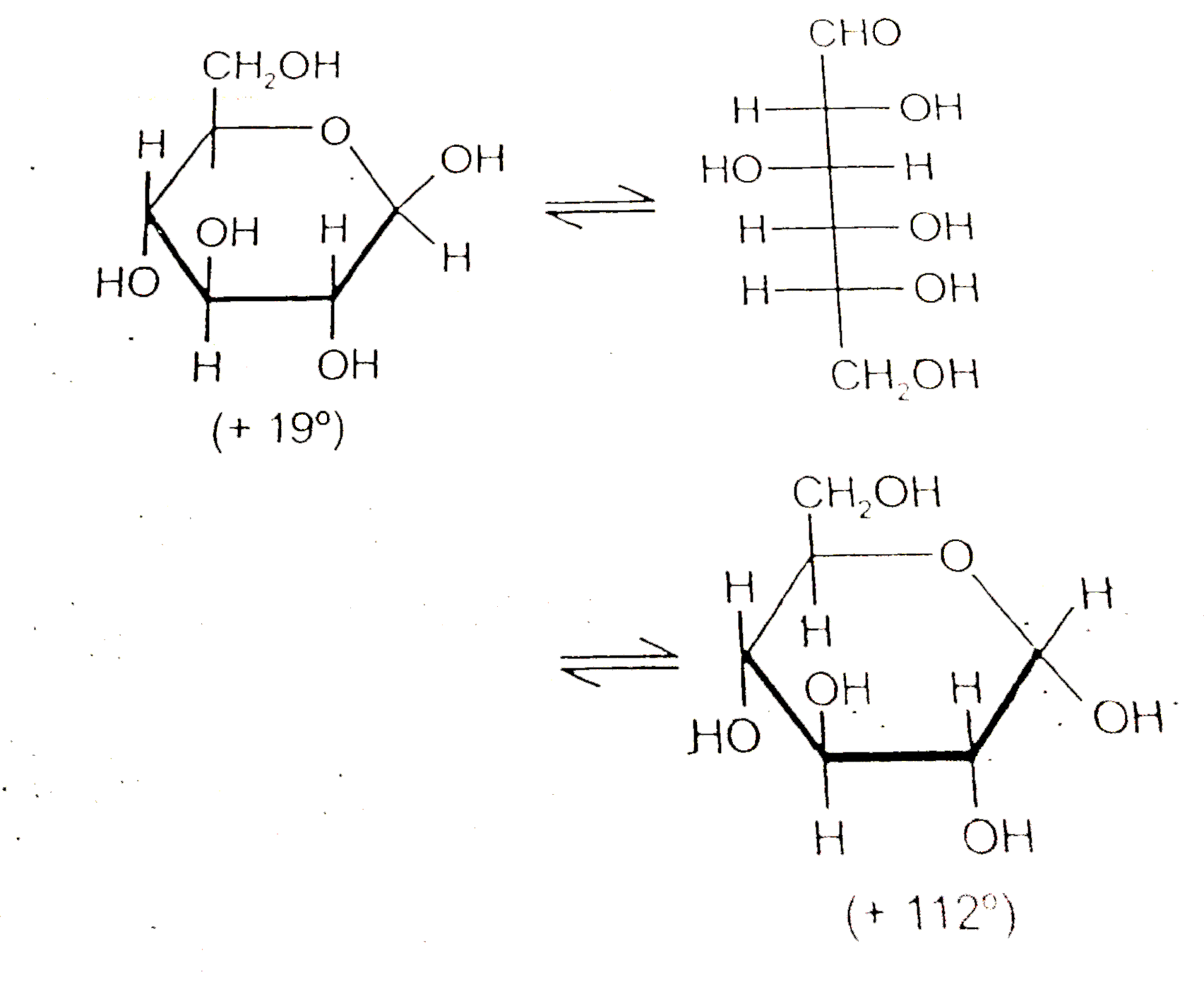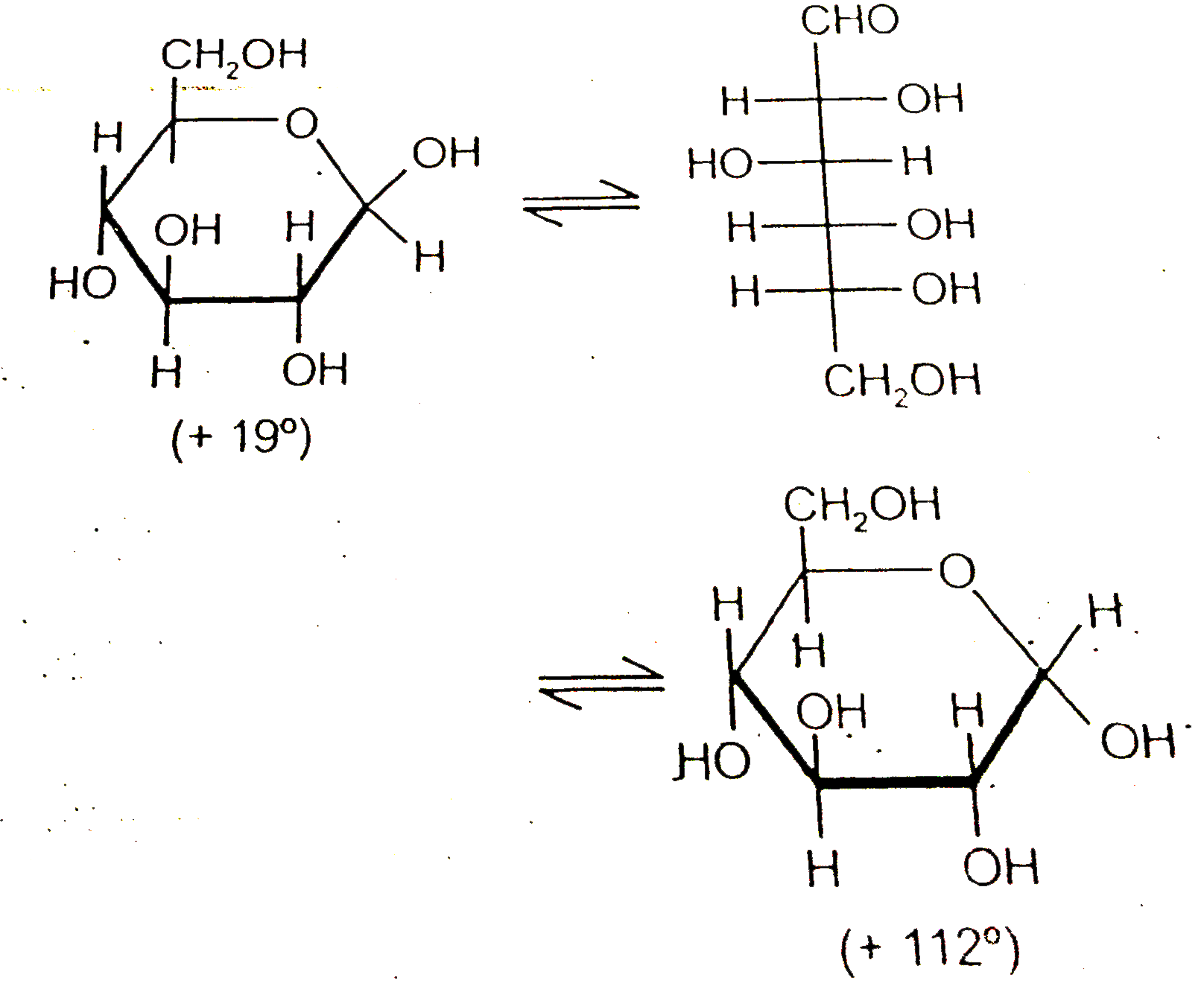When glucose is dissolved in water, it undergoes a partial converion to glucose to exhibit mutarotation. This conversion stops when of glucose is in form. Assuming that equilibrium has been attained, calculate for mutarotation.
The correct Answer is:B
Topper's Solved these Questions
- BOOK - RESONANCECHAPTER - CHEMICAL EQUILIBRIUMEXERCISE - Exercise-2 (Part-1)28videos
CHEMICAL EQUILIBRIUM
- BOOK - RESONANCECHAPTER - CHEMICAL EQUILIBRIUMEXERCISE - Exercise-2 (Part-2)23videos
CHEMICAL EQUILIBRIUM
- BOOK - RESONANCECHAPTER - CHEMICAL EQUILIBRIUMEXERCISE - Exercise-1 (Part-1)38videos
CHEMICAL EQUILIBRIUM
- BOOK - RESONANCECHAPTER - CHEMICAL BONDINGEXERCISE - Inorganic chemistry (Chemistry Bonding)49videos
CHEMICAL BONDING
- BOOK - RESONANCECHAPTER - D & F-BLOCK ELEMENTS & THEIR IMPORTANT COMPOUNDS EXERCISE - Match the column1videos
D & F-BLOCK ELEMENTS & THEIR IMPORTANT COMPOUNDS
Similar Questions
When α−D glucose is dissolved in water, it undergoes a partial converion to β−D glucose to exhibit mutarotation. This conversion stops when 63.6% of glucose is in β form. Assuming that equilibrium has been attained, calculate Kc for mutarotation.
View SolutionAssertion (A) D-glucose when dissolved in water undergo mutarotation while sucrose solution does not show mutarotation
Reason (R) D-glucose exist in two cyclic anomeric forms.View Solution
Knowledge Check
- Question 1 - Select One
During mutarotation of β-D-glucose in aqueous solution angle of optical rotation
ARemains constant value of + 111∘Bremains constant value of + 19.2∘Cchanges from an angle of 112∘ to a constant value of +52.5∘Dchanges from an angle of 19.2∘ to a constant value of +52.5∘ - Question 2 - Select One
The equilibrium constant for mutarotation α−D Glucose ⇔β−D Glucose 1.8. What percentage of α form remains at equilibrium?
A35.7B64.3C55.6D44.4 - Question 3 - Select One
Assertion : The specific rotation of a freshly prepared solution of α-glucose decreases from + 112∘ to 52.7∘ while that of β glucose increases from +19∘ to 52.7∘ .
Reason: The change in specific rotation of an optically active compound with time to an equilibrium value is called mutarotation.AIf both assertion and reason are true and the reason is the correct explanation of the assertion.BIf both assertion and reason are true but reason is not the correct explanation of the assertion.CIf assertion is true but reason is falseDif the assertion and reason both are false
When either form of D-Glucose is dissolved In water, the solution gradually changes its optical rotation and finally attains a constant optical rotation of +52∘.

Which form of D-GIucose is more stable?View SolutionA sugar exist in two isomeric form α−D & β−D with specific rotation of 110∘ and 30∘ respectively. When α−D form of the suar is dissolved in water exhibits mutarotation till the equilibrium value of 90∘ is attained. The equilibrium constant of mutarotation of β−D form [Assuming only α and β form in solution] is equal to:
View SolutionWhen either form of D-Glucose is dissolved In water, the solution gradually changes its optical rotation and finally attains a constant optical rotation of +52∘.

Which of the following statements, is true?View SolutionWhen either form of D-Glucose is dissolved In water, the solution gradually changes its optical rotation and finally attains a constant optical rotation of +52∘.

What is the percentage of open chain D-Glucose in solution?View Solutionα−(D) glucose ⇔β−(D) glucose, equilibrium constant for this s 1.8. The percentage of α−(D) glucose at equilibrium is
View Solution

